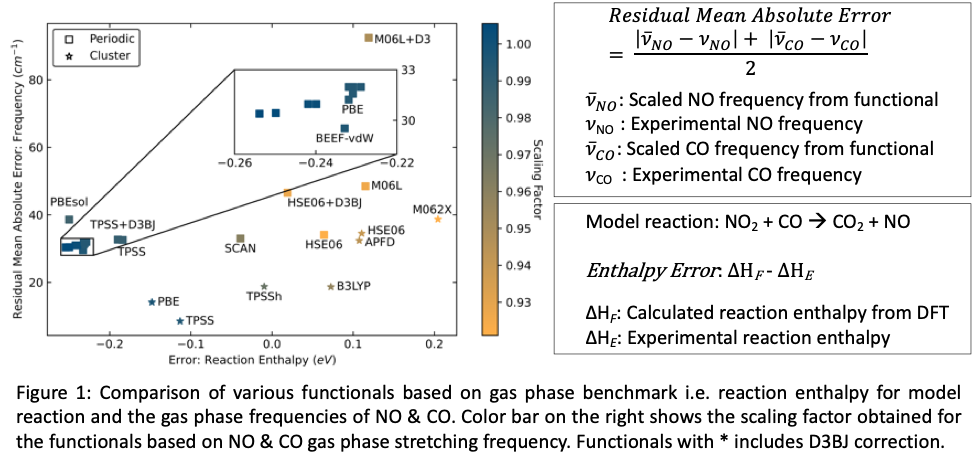2022 Annual Meeting
(532ee) Accuracy of DFT Functionals: A Benchmarking Study to Understand NO Binding on Pd-CHA
Authors
Another example where the choice of exchange-correlation (XC) functional can potentially alter qualitative conclusions is NO binding to Pd-exchanged zeolites, which is relevant for passive NOx adsorption (PNA). Our benchmark results show drastic differences by different functionals in reaction enthalpy of CO oxidation by NO2 as shown in Fig.1. Similar differences are translated as well for bond stretching frequency calculated by different functionals. These differences in just gas phase results can translate to incorrect active site assignment under actual reaction conditions.
Furthermore, we have investigated the binding properties of with different XC functionals on various possible active sites in PNA. We have incorporated higher levels of theory using plane-wave and Gaussian basis sets, the empirical van der Waals correction terms as well as the Hubbard-U term in order to assess the reliability of calculated binding energies. To identify the electronic structure level differences, we have used bond analysis tools such as crystal orbital Hamilton population (COHP) analysis. The benchmark results indicate that meta-GGA and hybrid functionals most reliably predict properties, whereas BEEF-vdW also performs well describing relevant frequencies and reaction enthalpies adequately. Our in-depth study has provided a better understanding of the reliability and robustness of DFT functionals for PNA and is paramount in explaining the dynamic changes of active sites during NOx trapping.
